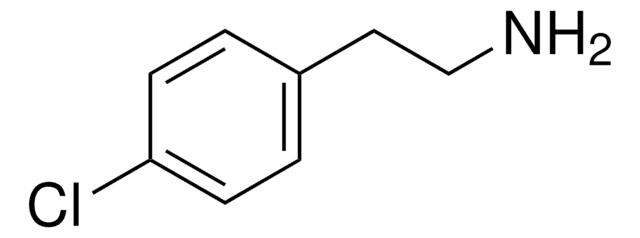255327
Tripropyl phosphate
99%
Sinónimos:
Tri-n-propyl phosphate
Iniciar sesiónpara Ver la Fijación de precios por contrato y de la organización
About This Item
Fórmula lineal:
(CH3CH2CH2O)3P(O)
Número de CAS:
Peso molecular:
224.23
Número CE:
Número MDL:
Código UNSPSC:
12352100
ID de la sustancia en PubChem:
NACRES:
NA.22
Productos recomendados
Ensayo
99%
Formulario
liquid
índice de refracción
n20/D 1.416 (lit.)
bp
120-122 °C/10 mmHg (lit.)
densidad
1.012 g/mL at 25 °C (lit.)
grupo funcional
phosphate
cadena SMILES
CCCOP(=O)(OCCC)OCCC
InChI
1S/C9H21O4P/c1-4-7-11-14(10,12-8-5-2)13-9-6-3/h4-9H2,1-3H3
Clave InChI
RXPQRKFMDQNODS-UHFFFAOYSA-N
Descripción general
Tripropyl phosphate is an organophosphorus flame retardant and plasticizer.
Aplicación
Tripropyl phosphate has been used as external standard in sampling of organophosphate triesters in indoor air by using solid phase extraction cartridges.
Palabra de señalización
Warning
Frases de peligro
Consejos de prudencia
Clasificaciones de peligro
Acute Tox. 4 Oral
Código de clase de almacenamiento
10 - Combustible liquids
Clase de riesgo para el agua (WGK)
WGK 3
Punto de inflamabilidad (°F)
235.4 °F - closed cup
Punto de inflamabilidad (°C)
113 °C - closed cup
Equipo de protección personal
Eyeshields, Faceshields, Gloves, type ABEK (EN14387) respirator filter
Elija entre una de las versiones más recientes:
¿Ya tiene este producto?
Encuentre la documentación para los productos que ha comprado recientemente en la Biblioteca de documentos.
Los clientes también vieron
Alessandro Bacaloni et al.
Environmental science & technology, 42(6), 1898-1903 (2008-04-16)
The concentration levels, distribution, and seasonal fluctuations of 12 organophosphorus flame retardants and plasticizers (OPs), of which some are reported to be toxic to aquatic organisms, were investigated in lakes from June 2006 to June 2007. Three volcanic lakes located
Thorvald Staaf et al.
Journal of environmental monitoring : JEM, 7(4), 344-348 (2005-03-31)
In this paper we demonstrate the use of SPE cartridges for sampling of organophosphate triesters in indoor air by adsorptive enrichment. The method has been optimised for the sampling and analysis of organophosphate triesters using a 25 mg aminopropyl silica
Rui Chen et al.
Environment international, 130, 104914-104914 (2019-06-22)
As potential substitutes for polybrominated diphenyl ethers (PBDEs), organophosphate flame retardants (OPFRs) have been frequently detected in the environment. However, the genotoxicity induced by these OPFRs has rarely been described, and the results reported in previous studies are conflicting and
Hongli Tan et al.
Environmental science & technology, 52(19), 11017-11026 (2018-09-11)
The present study investigated the occurrence of 20 organophosphate esters (OPEs) in house dust from 51 South China homes and the risks of human exposure to OPEs via two pathways: dust ingestion and hand-to-mouth contact. In addition to several traditional
Tao Wang et al.
Environmental research, 167, 437-444 (2018-08-21)
Organophosphate esters (OPEs) are novel ubiquitous contaminants that are attracting growing concern, but their emissions into the environment are still poorly understood. In this study, 12 OPEs were measured in fine particulate matter (PM2.5) at 20 industrial sites in an
Nuestro equipo de científicos tiene experiencia en todas las áreas de investigación: Ciencias de la vida, Ciencia de los materiales, Síntesis química, Cromatografía, Analítica y muchas otras.
Póngase en contacto con el Servicio técnico












